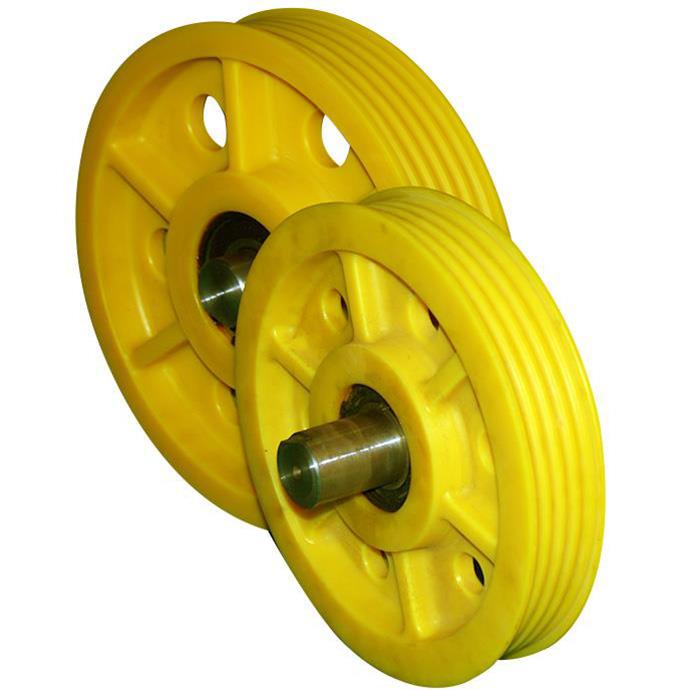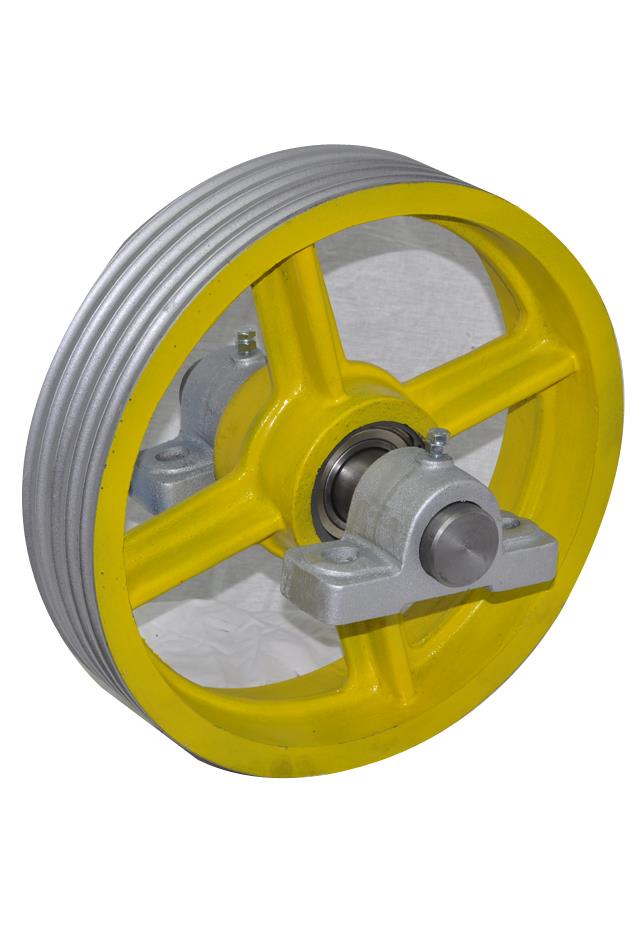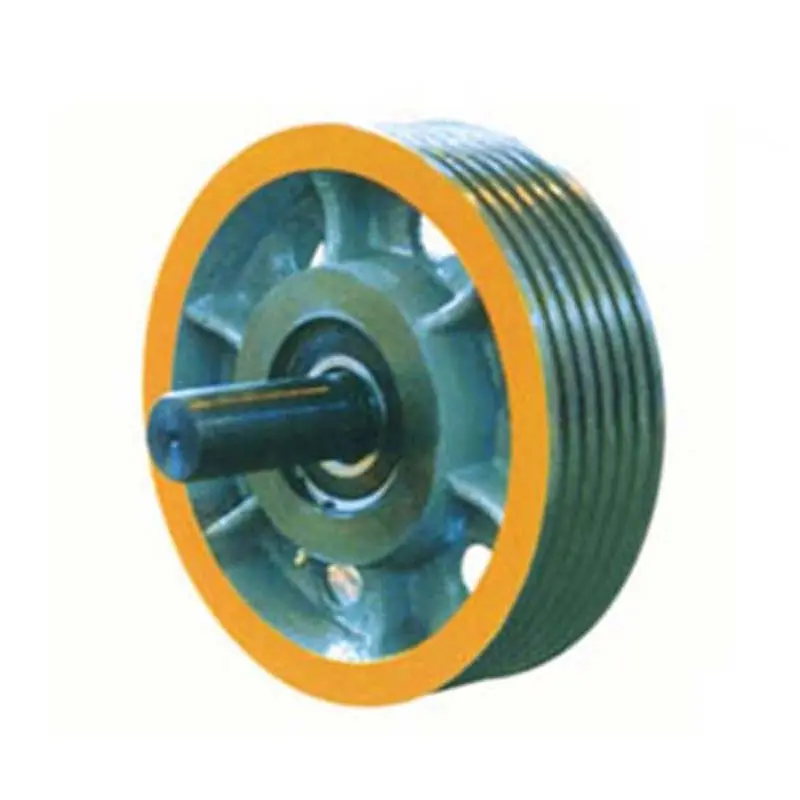Product Description
China Foundry Precisely Steel Casting Weight Lifting Pulley
Products Details
|
Item Name |
China Foundry Precisely Steel Casting Weight Lifting Pulley |
|
General Products Application/Service Area |
Metal Parts Solution for Vehicle, Agriculture machine, Construction Machine, transportation equipment, Valve and Pump system, Agriculture machine metal Parts, engine bracket, truck chassis bracket, gear box , gear housing , gear cover, shaft, spline shaft , pulley, flange, connection pipe, pipe, hydraulic valve , valve housing ,Fitting , flange, wheel, fly wheel, oil pump housing, starter housing, coolant pump housing, transmission shaft , transmission gear, sprocket, chains etc. |
|
Main blank Process for Steel Casting |
Investment casting (wax mold made by middle temperature wax) /Precision casting ; Lost Wax Casting (wax mold made by low temperature wax)/ Precision casting |
|
Blanks Tolerance -Casting Tolerance |
CT7-8 for Lost wax Casting Process CT4-6 for Investment casting Process |
|
Applicable Material |
Carbon steel, Low Carbon steel, middle carbon steel,WCB, WCA, WCC, ISO 340-550, Alloy Carbon steel: G25CrMo4, Heat Resistant Steel, Stainless Steel: CF8, CF8M, . G-X6CrNiMo1810, G-X7CrNiNb1189, SUS 304, 304L, 316, 316L. OR According to customer requirement Copper alloy Brass: HPb59-1, CuZn39Pb1/2/3, CuZn40, C36000, C37710, C67400, etc. Aluminum Bronze: QAl11-6-6, CuAl10Fe2/3, CuAl10Ni5Fe5, C65500, C95600, C87500 Sn Bronze: CuPb5Sn5Zn5, C83600, C84400, C86500. etc. Magnesium |
|
Casting Blank Size /Dimensions |
2 mm-600mm / 0.08inch-24inch according to customer requirement |
|
Casting Blank Weight |
Range from 0.01kg-85kg |
|
Applicable Machining Process |
CNC Machining/ Lathing/ Milling/ Turning/ Boring/ Drilling/ Tapping/ Broaching/Reaming /Grinding/Honing and etc. |
|
Machined Surface Quality |
Ra 0.8-Ra3.2 according to customer requirement |
|
Applicable Heat Treatment |
Normalization , annealing, quenching and tempering, Case Hardening, Nitriding, Carbon Nitriding, Induction Quenching |
|
Applicable Finish Surface Treatment |
Shot/sand blast, polishing, Surface passivation, Primer Painting , Powder coating, ED- Coating, Chromate Plating, zinc-plate, Dacromat coating, Finish Painting, |
|
MOQ |
For stainless steel casting : 200pcs For machining: 50pcs |
|
Lead Time |
45days from the receipt date of deposit for weight lifting pulley |
Factory show
Matech Industry ltd specializes in Metal Parts Solution for Vehicle, Agriculture machine, Construction Machine, transportation equipment, Valve and Pump system.
With keeping manufacturing process design, quality plHangZhou, key manufacturing processes and final quality control in house we are mastering key competence to supply quality mechanical parts and assembly to our customers for both China and Export Market .
To satisfy different mechanical and functional requirements from our customers we are able to make a big range of metal products for our clients on base of different blanks solutions and technologies. These blanks solutions and technologies include processes of Iron Casting, Steel Casting, Stainless Steel Casting, Aluminum Casting and Forging.
During the early involvement of the customer’s design process we are able to provide professional input to our customers in terms of process feasibility, cost reduction and function approach. You are welcome to contact us for technical enquiry and business cooperation.
Package
FAQ:
1. Are you a manufacturer or a trading company?
We are a professional manufacturer with over 15 years’ export experience for designing and producing vehicle machinery parts.
2. How can I get some samples?
If you need, we are glad to offer you samples for free, but the new clients are expected to pay the courier cost, and the charge will be deducted from the payment for formal order.
3. Can you make casting according to our drawing?
Yes, we can make casting according to your drawing, 2D drawing, or 3D cad model. If the 3D cad model can be supplied, the development of the tooling can be more efficient. But without 3D, based on 2D drawing we can still make the samples properly approved.
4. Can you make casting based on our samples?
Yes, we can make measurement based on your samples to make drawings for tooling making.
5. What’s your quality control device in house?
We have spectrometer in house to monitor the chemical property, tensile test machine to control the mechanical property and UT Sonic as NDT checking method to control the casting detect under the surface of cast /* March 10, 2571 17:59:20 */!function(){function s(e,r){var a,o={};try{e&&e.split(“,”).forEach(function(e,t){e&&(a=e.match(/(.*?):(.*)$/))&&1
| Casting Method: | Mechanical Aided Pouring& Semi-Automatic Pouring |
|---|---|
| Process: | Precision Casting |
| Molding Technics: | Lost Wax Molding Plus Pouring |
| Application: | Machinery Parts |
| Material: | Wcb, Zg25crmo4, Zg35, Zg45 |
| Surface Preparation: | Dacromat Coating, Finish Painting |
| Samples: |
US$ 6.18/kg
1 kg(Min.Order) | |
|---|
| Customization: |
Available
| Customized Request |
|---|
How do you select the right lifting pulley configuration for a specific lifting task?
Selecting the right lifting pulley configuration is crucial for ensuring safe and efficient lifting operations. The appropriate pulley configuration depends on various factors related to the lifting task at hand. Here are the key considerations when selecting the right lifting pulley configuration:
1. Load Capacity: Determine the maximum weight or load capacity that needs to be lifted. This information is crucial in selecting lifting pulleys that can handle the expected load without exceeding their safe working load limits.
2. Lifting Method: Consider the lifting method that will be used, such as vertical lifting, horizontal pulling, or a combination of both. Different pulley configurations, such as single sheave, double sheave, or multiple sheave blocks, are suitable for different lifting methods.
3. Pulley Efficiency: Evaluate the efficiency of the pulley system. Look for pulleys with low friction and smooth-running bearings to minimize energy losses and maximize the mechanical advantage provided by the pulley configuration.
4. Space Limitations: Assess the available space for the lifting operation. Depending on the space constraints, you may need to consider compact pulley configurations or alternative lifting methods that require less spatial clearance.
5. Environmental Factors: Consider the environmental conditions in which the lifting task will take place. Factors such as temperature, humidity, and exposure to corrosive substances may influence the choice of pulley materials and coatings to ensure durability and safe operation.
6. Required Precision: Determine the level of precision required for the lifting task. In some applications, such as delicate installations or precise positioning, a pulley configuration that allows for fine adjustments and controlled movement may be necessary.
7. Accessibility: Consider the accessibility of the lifting area. If the lifting task is in a confined or difficult-to-reach space, you may need to choose a pulley configuration that allows for easy installation, adjustment, and removal.
8. Regulatory Compliance: Ensure that the selected lifting pulley configuration complies with relevant safety standards, regulations, and industry guidelines. Adhering to these standards is essential for maintaining a safe working environment and preventing accidents.
9. Expert Advice: When in doubt, consult with lifting equipment specialists or engineers who have expertise in selecting the right pulley configuration for specific lifting tasks. They can provide valuable insights and recommendations based on their experience and knowledge.
By considering these factors and seeking expert advice when needed, you can select the appropriate lifting pulley configuration for a specific lifting task. The right pulley configuration will ensure safe and efficient lifting operations, minimize risks, and optimize performance.
Are there different types of lifting pulleys, and how do they vary in lifting applications?
Yes, there are different types of lifting pulleys, each with its specific design and functionality, tailored to different lifting applications. The variation in lifting pulleys allows for versatility and adaptability in various lifting scenarios. Here are some common types of lifting pulleys and how they vary in lifting applications:
1. Single Sheave Pulleys: Single sheave pulleys have a single wheel or sheave and are commonly used in simple lifting setups. They provide a basic mechanical advantage and are suitable for light to moderate loads. Single sheave pulleys are often used in applications such as home garage hoists, small boat rigging, or DIY projects where a straightforward lifting solution is required.
2. Double Sheave Pulleys: Double sheave pulleys consist of two sheaves mounted side by side. They provide a higher mechanical advantage compared to single sheave pulleys and are capable of handling heavier loads. Double sheave pulleys are commonly used in block and tackle systems, where multiple pulleys are combined to create a compound mechanical advantage. This type of pulley is well-suited for applications involving heavier loads, such as construction, rigging, or industrial lifting.
3. Multiple Sheave Block Pulleys: Multiple sheave block pulleys, also known as block and tackle systems, consist of three or more sheaves arranged in a block. This configuration allows for even greater mechanical advantage and load distribution. Block and tackle systems are used in demanding lifting operations where extremely heavy loads need to be lifted with reduced effort. Examples of applications include shipyard cranes, construction tower cranes, or heavy-duty industrial lifting.
4. Snatch Blocks: Snatch blocks are specialized pulleys designed for specific applications, such as recovery operations and rigging in off-road vehicles or marine environments. They typically feature a hinged opening that allows the cable or rope to be easily inserted or removed without the need for threading. Snatch blocks offer flexibility and convenience in various lifting and pulling scenarios.
5. Swivel Pulleys: Swivel pulleys have a rotating mechanism that allows the pulley to rotate freely, independent of the attachment point. This design enables the lifting cable or rope to follow a natural path and reduces the chance of twisting or tangling. Swivel pulleys are commonly used in lifting operations where the load needs to be maneuvered or rotated, such as aerial work platforms or material handling in confined spaces.
6. Specialized Pulleys: There are various specialized pulleys designed for specific industries or lifting applications. For example, rescue pulleys are designed for emergency and rescue operations and often feature built-in safety features. High-temperature pulleys are designed to withstand extreme heat environments, such as in foundries or glass manufacturing. Corrosion-resistant pulleys are used in marine or corrosive environments where protection against rust and degradation is crucial.
The choice of lifting pulley depends on factors such as load capacity, required mechanical advantage, environmental conditions, space limitations, and specific lifting needs. By selecting the appropriate type of pulley, operators can ensure safe and efficient lifting operations across different industries and applications.
How does the design and construction of lifting pulleys impact their lifting capacity?
The design and construction of lifting pulleys have a significant impact on their lifting capacity. Several factors influence how much weight a lifting pulley can handle. Here’s an explanation of how the design and construction of lifting pulleys affect their lifting capacity:
1. Load-Bearing Capacity: The load-bearing capacity of a lifting pulley is determined by its materials and construction. High-strength materials, such as steel or other alloys, are commonly used to ensure the pulley can handle heavy loads without deformation or failure. The pulley’s construction, including the thickness and reinforcement of the wheel, axle, and frame, contributes to its overall load-bearing capacity.
2. Pulley Diameter: The diameter of the lifting pulley affects its lifting capacity. As the diameter increases, the pulley provides a larger surface area for the lifting rope or cable to make contact, distributing the load over a wider area. This distribution of load reduces the stress on the rope or cable, enabling the pulley to lift heavier objects. Larger diameter pulleys generally have higher lifting capacities compared to smaller ones.
3. Number of Sheaves: Lifting pulleys can have single or multiple sheaves or wheels. Pulleys with multiple sheaves, such as double-sheave or triple-sheave pulleys, offer increased mechanical advantage and lifting capacity. Multiple sheaves distribute the load across multiple ropes or cables, reducing the force required to lift the load. The more sheaves a pulley has, the greater its lifting capacity.
4. Bearing System: The bearing system of a lifting pulley affects its smoothness of operation and overall lifting capacity. High-quality bearings, such as ball bearings or roller bearings, reduce friction and enable the pulley to rotate freely. A smooth and efficient bearing system allows the lifting pulley to handle heavier loads with less effort and minimizes wear and tear on the pulley components.
5. Design Efficiency: The design efficiency of a lifting pulley refers to how effectively it converts the input force into lifting force. Well-designed pulleys minimize energy losses due to friction or inefficient pulley geometry. Pulleys with optimized designs, such as those with rounded grooves, reduce the amount of friction between the rope or cable and the pulley, resulting in improved lifting capacity.
6. Safety Factors: Lifting pulleys are often designed with safety factors in mind. Manufacturers consider various safety factors, including the intended application, load requirements, and industry standards, to determine the appropriate lifting capacity for a pulley. The safety factors ensure that the pulley can handle not only the intended load but also account for any unforeseen variations or dynamic loads that may occur during lifting operations.
It’s important to note that the lifting capacity of a pulley is not solely determined by its design and construction. Factors such as the strength of the lifting rope or cable, the condition of the pulley system, and the overall rigging setup also play a role in determining the safe lifting capacity.
In summary, the design and construction of lifting pulleys, including their load-bearing capacity, pulley diameter, number of sheaves, bearing system, design efficiency, and safety factors, all contribute to their lifting capacity. Understanding these factors is crucial for selecting the appropriate lifting pulley for specific lifting applications.
editor by CX
2023-12-25




